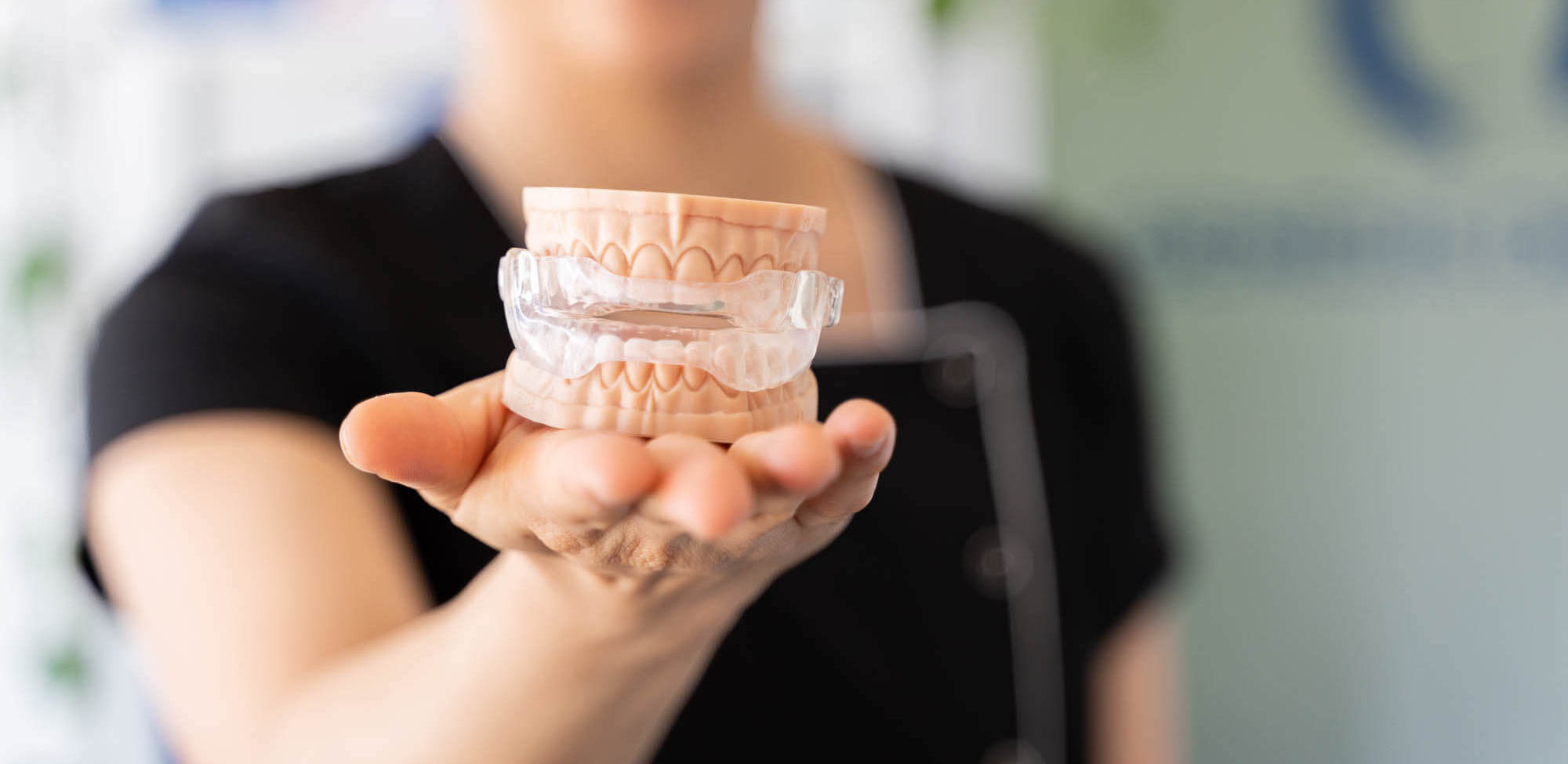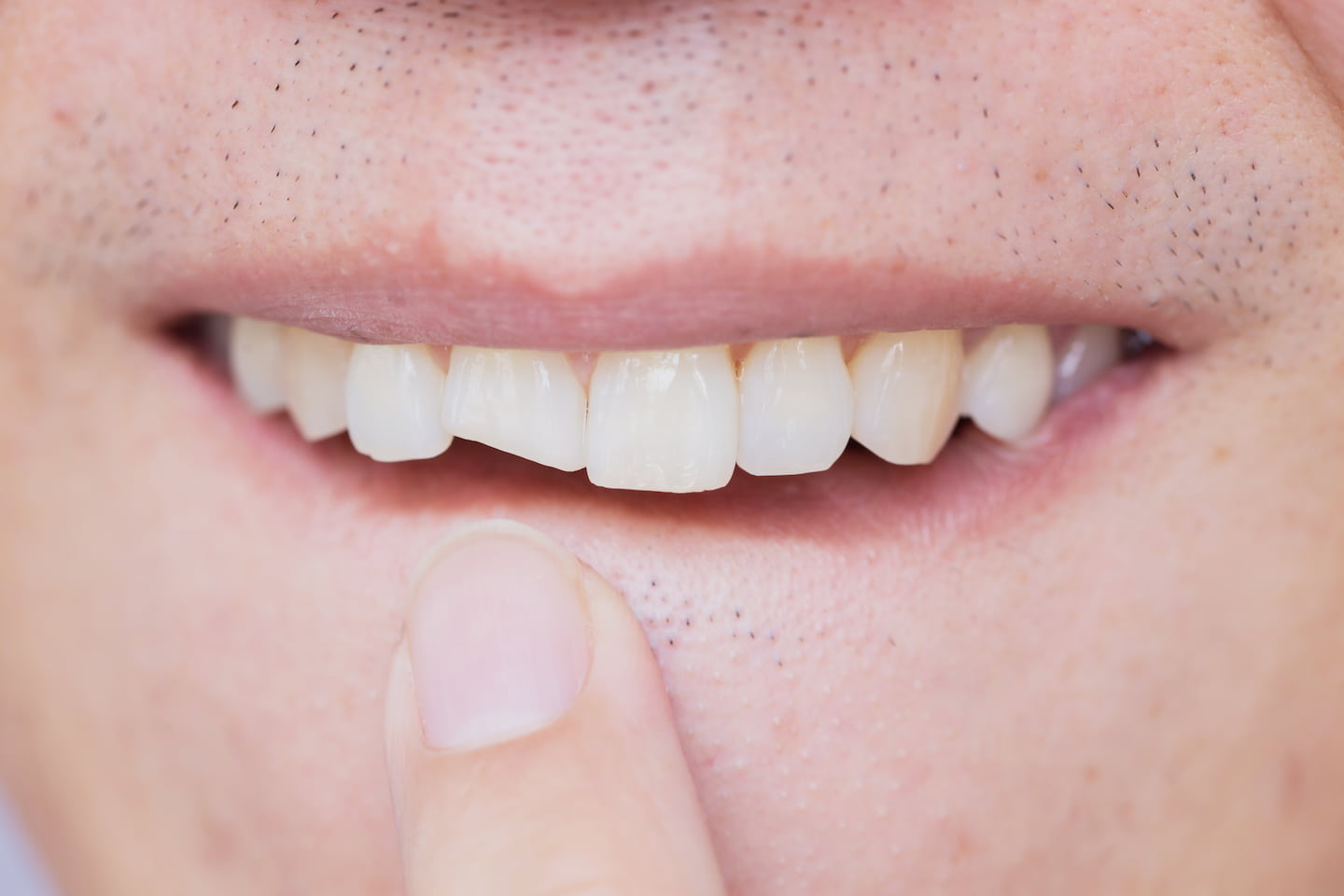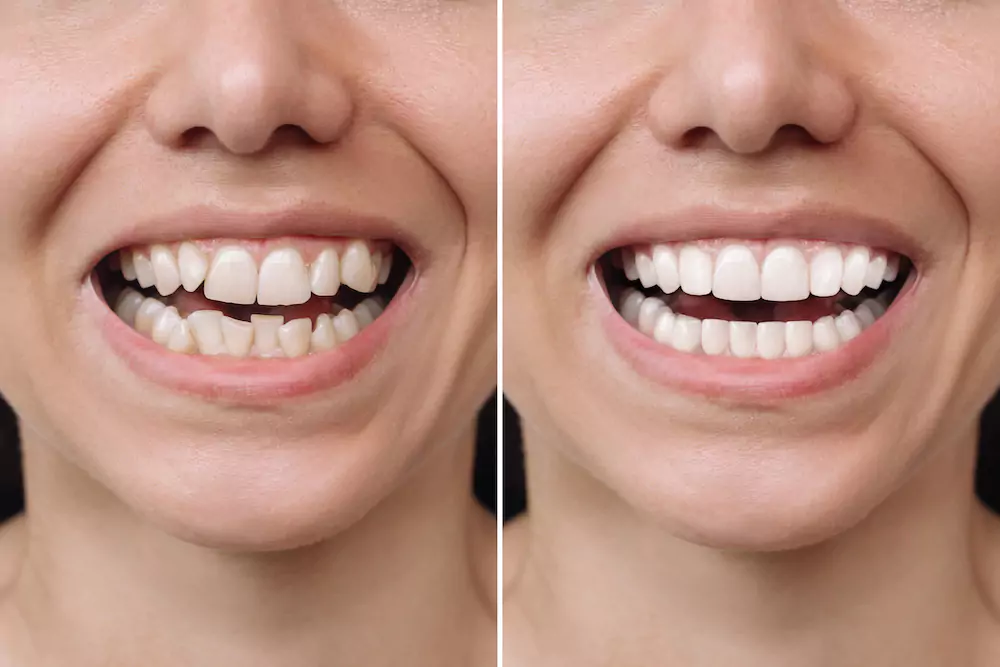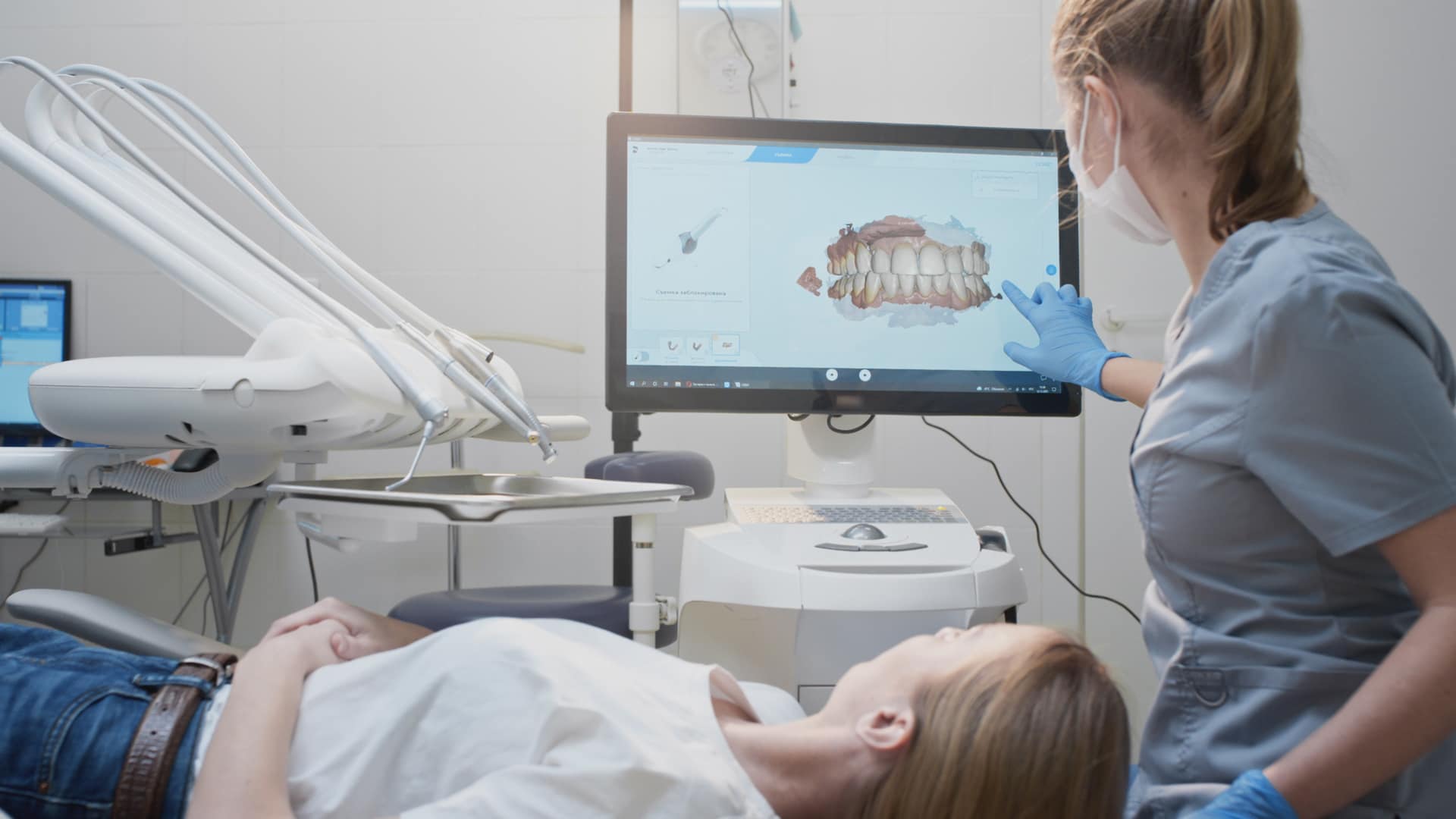
Teeth Alignment Timelines: How Long Do You Need Braces For?
Although the answer depends on your condition and goals, I tell patients to generally expect teeth alignment to take between 12 to 24 months.
In this article, I’ll explain the factors that affect how long you’ll need to wear braces or clear aligners so you have a better idea of what to expect.
Key Takeaways
- Teeth alignment timelines depend on factors such as age, the condition being treated, patient compliance, oral hygiene, and the type of braces
- Following the treatment plan closely and adhering to the Do’s and Don’ts of wearing braces ensures the best outcome and prevents treatment delays
- Additional orthodontic tools, such as rubber bands, are sometimes needed to ensure proper treatment results
- There are several orthodontic advancements that may have positive outcomes on treatment times
Alignment Timelines Per Brace Type
Different types of braces require different durations to achieve results.
The average treatment time of types of braces varies, but here’s a general idea:
| Brace Type | Description | Average Alignment Time |
|---|---|---|
| Traditional Metal Braces |
|
12-36 months |
| Clear Aligners |
|
12-24 months |
| Clear Ceramic Braces |
|
12-36 months |
| Lingual Braces |
|
12-24 months |
- Traditional Metal Braces — Patients typically need to wear traditional metal braces for anywhere between 12 to 36 months. The average treatment time hovers around 24 months. Treatment with metal braces involves metal brackets attached to teeth and connected by wires. At regular appointments, the wires are tightened in small increments to slowly move teeth into alignment. Traditional metal braces are the gold standard for correcting more severe orthodontic issues.
- Clear Aligners — These clear plastic trays are removable and practically invisible, allowing patients to enjoy discrete treatment. Treatment with clear aligners involves custom clear trays that are created based on molds of a patient’s teeth. Every few weeks, patients change to a new set of aligners that are slightly different from the previous set. Each set subtly shifts teeth toward the desired alignment. Treatment with clear aligners typically takes between 12 to 24 months.
- Clear Ceramic Braces — Clear ceramic braces are more expensive than traditional braces but involve similar treatment times, between 12 to 36 months.
- Lingual Braces — Lingual braces are glued to the backs of teeth so they are almost invisible. Treatment takes between 12 to 24 months. While lingual braces are an effective option, they are also the most expensive type of braces.
If you have questions about the different types of braces and which might be best for you, feel free to contact our team.
You May Also Like: Invisalign vs Braces: Which Is Better?
Factors Affecting Alignment Duration
Here are some main factors that can affect the amount of treatment time it takes to wear braces:
Severity of the Condition
The condition being treated and its severity are the most important factors for treatment duration.
Cases of mild misalignment or crowding can be treated in as little as 12 to 18 months. More complex conditions or severe misalignment will require longer treatment times, typically between 18 and 24 months.
In some cases, severe conditions or alignment issues will require treatment time up to 3 years.
Conditions that will most likely require longer treatment time include:
- Crossbite
- Open bite
- Underbite
- Severe crowding
- Overbite
- TMJ disorders
- Jaw alignment issues
Patient Age
In general, adults need to wear braces for a longer duration to achieve the desired results.
Because their jawbones and teeth are still developing, moving children’s teeth into proper alignment can be easier and faster to complete.
Patient Compliance
Patient compliance is another huge factor I notice regarding treatment duration. While following all of your dentist’s recommendations during treatment won’t necessarily shorten your treatment time, it will prevent delays.
This is especially true if you are completing treatment with removable clear aligners. Without adequate wear time, the teeth fail to move as quickly and treatment often takes longer.
Learn More: Are Invisible Aligners Effective?
Oral Hygiene
Good oral hygiene becomes especially important while wearing braces of any kind. With tiny crevices and hard-to-reach areas, traditional metal braces can pose the most difficulty.
If food gets trapped behind brackets, it can lead to plaque buildup, decay, and discolouration once the braces are removed. Proper oral hygiene helps prevent treatment delays and keep teeth and gums healthy throughout the process.
If patients tell me they are struggling to clean behind wires or brackets, I recommend an electric toothbrush with a round head.
Regular Checkups
Attending regular checkups ensures any problems are caught and addressed right away before major issues develop.
Regular checkups also allow continuous monitoring of progress to ensure the patient is on track to finish the treatment as expected.
Do’s and Don’ts of Wearing Braces
Complying with your treatment plan is key to completing treatment within the expected time frame and ensuring good results.
Whether you have clear aligners, lingual braces, or traditional metal braces, here are the big Do’s and Don’ts I recommend:
- Adhere to your orthodontist’s treatment plan and recommendations
- Maintain good oral hygiene by brushing twice a day and flossing once a day
- Avoid hard, sticky, sugary, or acidic foods (examples include gum, popcorn, nuts, ice, candy, and other foods that can get stuck in the metal brackets or damage wires)
- See your dentist for regular checkups
- Avoid contact sports (ask your dentist about a custom mouthguard if you do participate in contact sports)
- After completing orthodontic treatment, ensure you continue to wear your retainers as directed by the orthodontist. Usually this mean wearing removable retainers at night indefinitely, to maintain the new position of your teeth.
Other Orthodontic Tools That Are Used
Treatment with braces may sometimes require additional orthodontic tools.
Here are some additional tools that may be used to support your treatment:
- Rubber Bands — These tiny rubber bands attach to the brackets to help achieve the desired jaw alignment. These are a fairly popular orthodontic tool used during treatment with traditional braces.
- Headgear — For complex jaw conditions, headgear may be required. Headgear treatment typically involves a device that is worn over a patient’s head or face at night.
- Palatal Expanders — Palate expanders use gentle force to slowly widen a patient’s jaw. Palate expanders are used more commonly for treating children since they are still growing. In some cases, palate expanders can shorten the amount of time a patient will need to wear braces in the future.
Alignment Example
Here’s a mock scenario showing how patient compliance affects treatment time.
Background:
Jack, a 15-year-old student in Perth, begins his braces journey to correct his overbite.
Initial Phase:
Dr. Taylor, his orthodontist, estimates a 2-year treatment with traditional braces, emphasising the importance of oral hygiene and regular check-ups.
Six Months In:
Jack adapts his diet to accommodate his braces. He avoids hard and sticky foods such as popcorn, chewing gum, nuts, and hard candies. After an incident with a broken bracket from biting into an apple, he becomes more cautious.
Adhering to Best Practices:
Jack diligently brushes his teeth after meals, uses a special orthodontic flosser, and attends all his orthodontic appointments for adjustments. He also avoids sugary drinks to prevent tooth decay around his braces.
Year One Review:
Significant progress is visible in his teeth alignment. However, to address Jack’s jaw alignment, Dr. Taylor introduces rubber bands, which Jack wears as instructed, even though they are slightly uncomfortable at first.
Final Stretch:
Curious about speeding up his treatment, Jack discusses this with Dr. Taylor, who explains the risks of rushing orthodontic work. Jack decides to trust the process and continue as advised.
Braces Off:
After 24 months, Jack’s braces are removed, revealing his well-aligned smile. He receives a retainer, which he commits to wearing every night.
Post-Treatment:
Jack’s newfound confidence is evident. He continues to follow good oral hygiene practices and wears his retainer regularly, ensuring the longevity of his orthodontic results
Conclusion
Essentially, the length of treatment time will depend on your age, the severity of your condition, your compliance with the treatment plan, and your oral hygiene.
If you have more specific questions relating to how long braces take to align your teeth, please feel free to get in touch with our friendly dentists in Canning Vale.
I am always happy to help people achieve a smile that is straight, bright, and — most importantly — healthy!



